The Louvre Museum, a cultural icon of Paris, is not only a treasure trove of art but also a witness to history. Every year, millions of visitors from all over the world flock here to admire priceless masterpieces. But among the countless works of art, which are the most famous paintings that you cannot miss when visiting the Louvre? Let “Discovery To Wonders” take you to explore the most sparkling “pearls” of painting, the stories behind them, and why they have such immense appeal.
Mona Lisa – The World’s Most Enigmatic Smile
Leonardo da Vinci’s Mona Lisa is undoubtedly the most famous work at the Louvre, and perhaps in the entire world. Painted in the 16th century, this oil portrait attracts visitors with the enigmatic smile and seemingly speaking eyes of the woman. Mona Lisa is not just a painting, but also a cultural icon, an endless source of inspiration for artists and researchers.
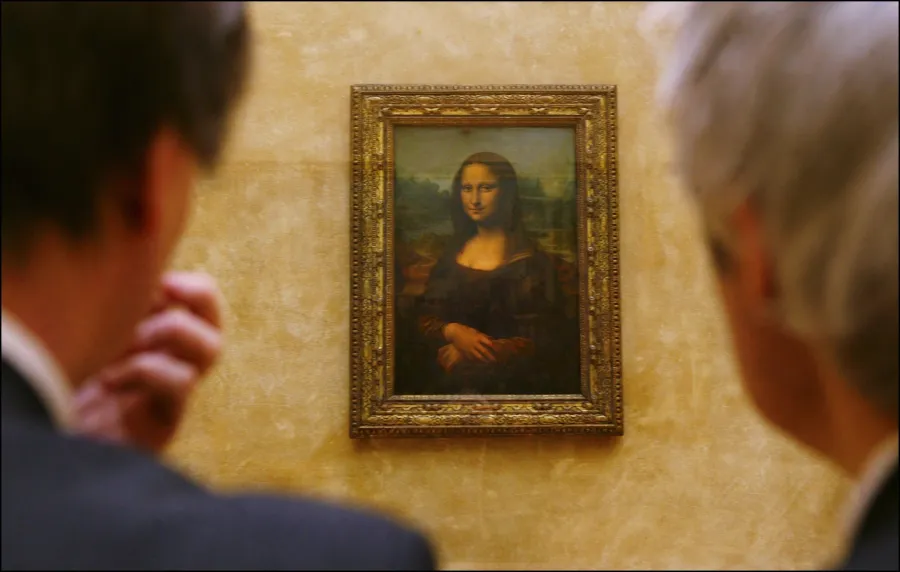
The fame of the Mona Lisa also comes from the stories and legends surrounding it. Many believe that Mona Lisa’s smile changes with the viewing angle and light, creating a unique visual effect. There are also theories about the true identity of the woman in the painting, further adding to the mystery of the artwork.
Winged Victory of Samothrace – Symbol of Glory
Not only paintings, but the Louvre also possesses magnificent sculptures. The statue “Winged Victory of Samothrace” (Nike of Samothrace) is one of them. Sculpted in 190 BC, this marble statue depicts the goddess Nike, the symbol of victory in Greek mythology.
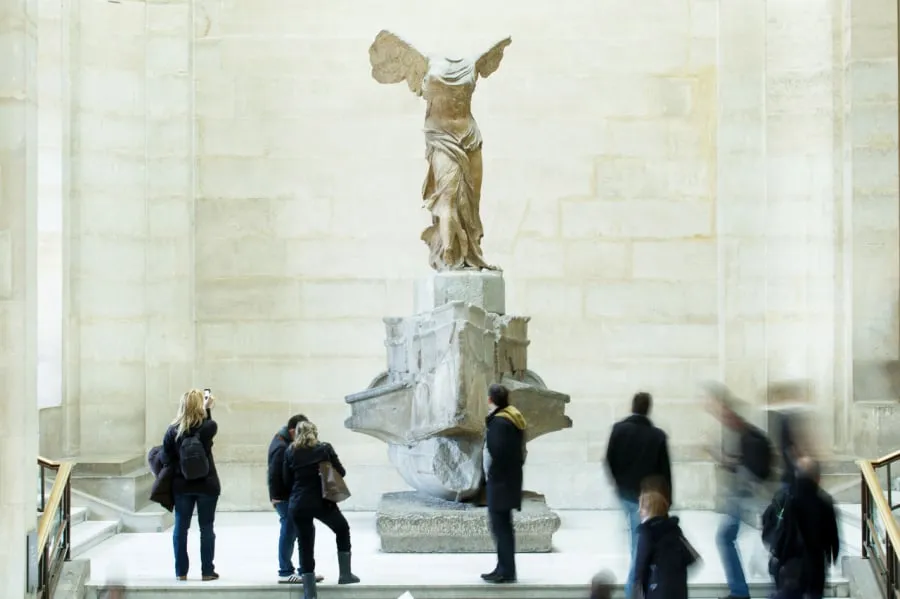
The statue impresses with its majestic and vivid beauty. Although it has lost its head and arms, the lines on the body still express the flexibility and strength of a flying goddess. “Winged Victory of Samothrace” is a testament to the masterful sculpting talent of the ancient Greeks, and a symbol of strength and glory.
The Raft of the Medusa – An Epic of Hope and Despair
“The Raft of the Medusa” is a haunting oil painting by the artist Théodore Géricault. The painting recreates the tragedy of the Medusa ship, when survivors had to struggle on a raft drifting in the open sea.
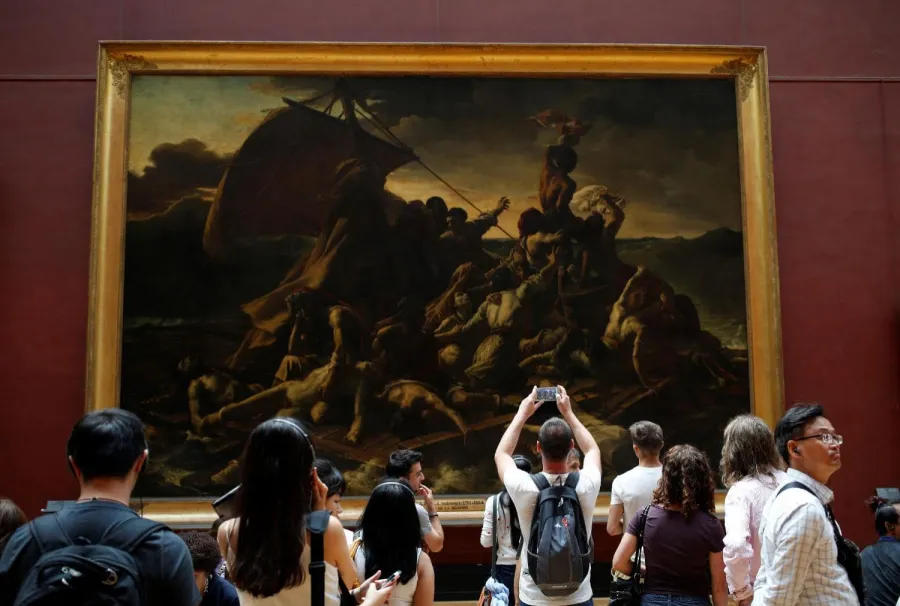
Géricault used somber colors, complex composition, and tragic imagery to convey the suffering, despair, and hope of people in harsh circumstances. “The Raft of the Medusa” is not only a historical painting, but also a social indictment, a call for compassion and justice.
Cupid and Psyche – Love Overcoming All Challenges
The statue “Cupid and Psyche” by Antonio Canova is a beautiful sculpture depicting two gods in Roman mythology: Cupid (god of love) and Psyche (goddess of the soul). The statue depicts the moment the two exchange a kiss, a symbol of true love, overcoming all trials and tribulations.
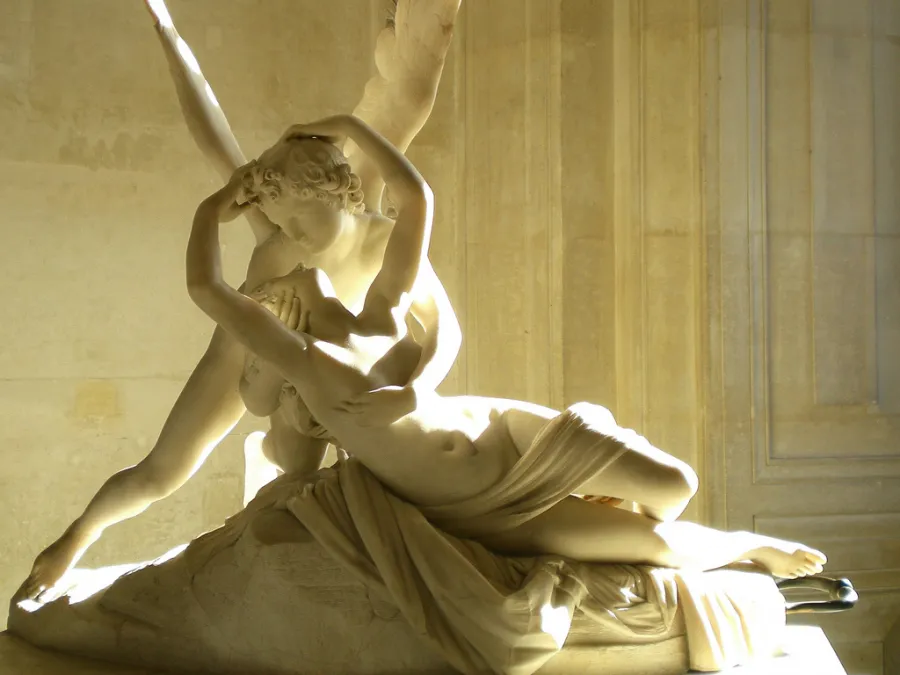
Canova used sophisticated sculpting techniques to create soft, flexible lines, expressing the pure beauty and emotional resonance in the souls of the two gods. “Cupid and Psyche” is a timeless love song about love, faith, and sacrifice.
The Seated Scribe – Witness of Ancient Egyptian Civilization
The statue “The Seated Scribe” is one of the most important works of ancient Egyptian art. The statue depicts a scribe sitting at work, with a focused expression and bright eyes.
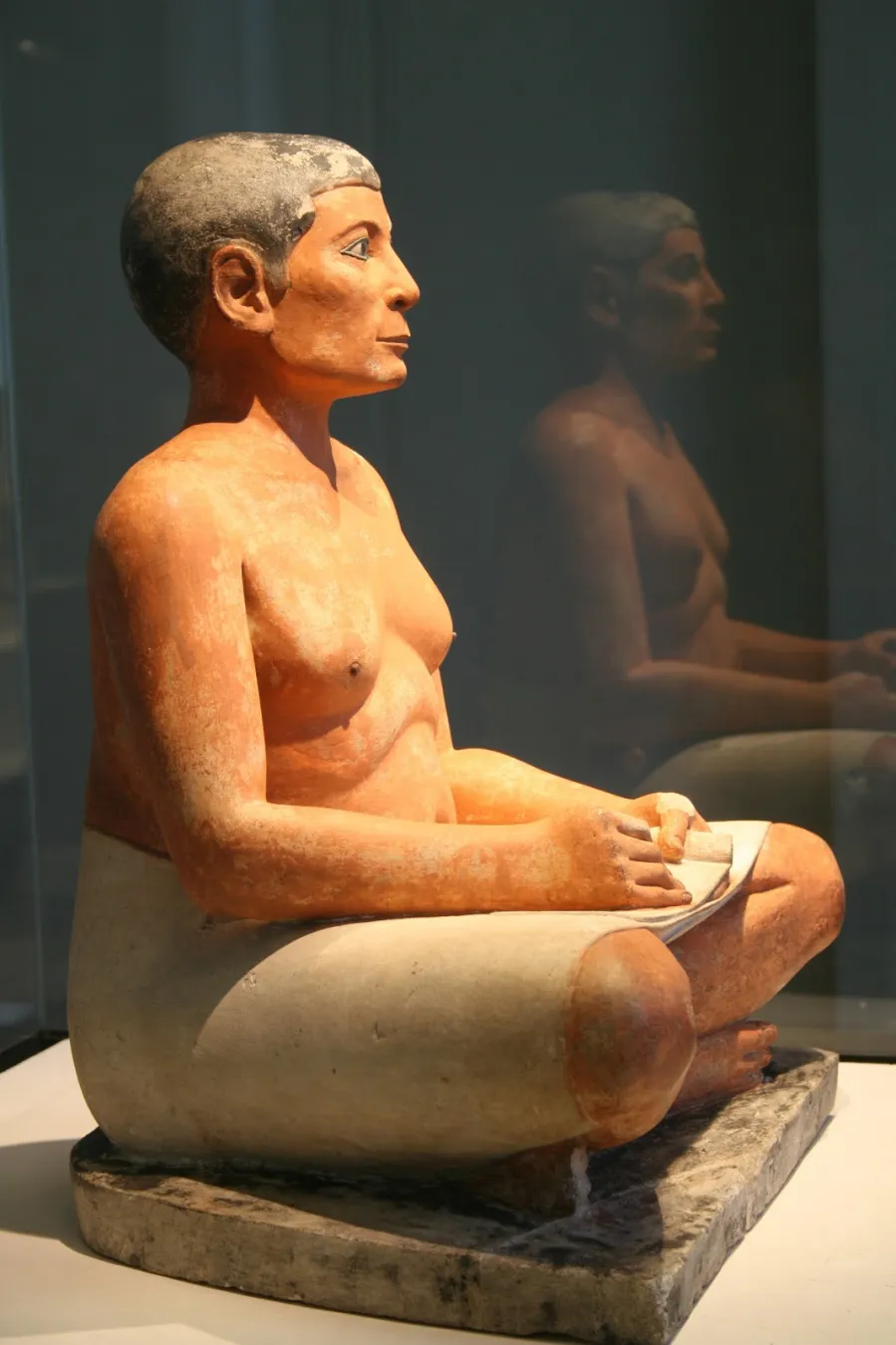
The statue was sculpted around 2620-2500 BC, demonstrating the sophisticated sculpting skills and deep understanding of anatomy of the ancient Egyptians. “The Seated Scribe” is not only a work of art, but also a valuable historical document, helping us better understand the life, culture, and society of ancient Egypt.
The Death of Sardanapalus – The Decay of Power
“The Death of Sardanapalus” is a dramatic oil painting by Eugène Delacroix. The painting is inspired by the story of King Sardanapalus, who ordered the destruction of all his possessions and committed suicide after his army was defeated.

Delacroix used vibrant colors, chaotic composition, and violent imagery to depict the decay and depravity of power and the brutality of war. “The Death of Sardanapalus” is a warning about the consequences of greed, cruelty, and abuse of power.
Liberty Leading the People – Symbol of Revolution
“Liberty Leading the People” is another famous work by Eugène Delacroix, depicting the July Revolution of 1830 in Paris. The painting depicts the image of Liberty, with the French flag in hand, leading the people to fight.
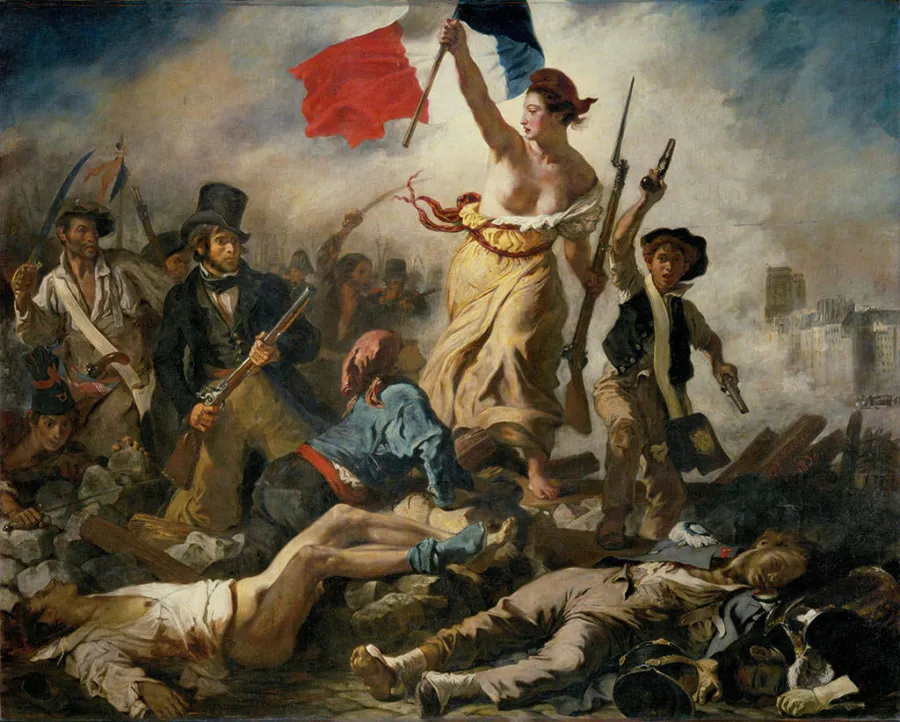
The painting expresses the spirit of patriotism, the desire for freedom, and the courage of the French people. “Liberty Leading the People” has become a symbol of revolution, democracy, and human rights worldwide.
Sleeping Hermaphroditus – Androgynous Beauty
The replica of the statue “Sleeping Hermaphroditus” is a unique sculpture depicting a figure with both male and female genders. The statue embodies androgynous beauty, the harmony between the two sexes, and the complexity of gender identity.
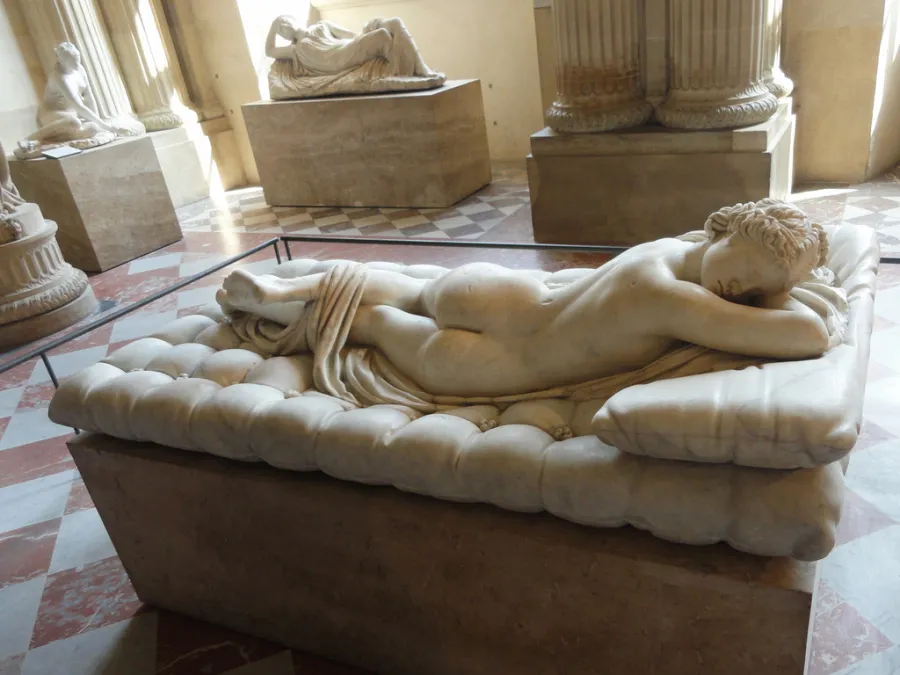
The statue was recreated by Gian Lorenzo Bernini in 1619, based on an ancient Greek bronze statue. “Sleeping Hermaphroditus” is a meaningful work of art, sparking reflections on gender, identity, and the beauty of difference.
The Moneylender and His Wife – A Warning About Greed
“The Moneylender and His Wife” is a painting by Quentin Matsys, depicting a couple calculating money and property to lend for interest. The painting expresses the greed, selfishness, and moral decay of those who only know money.

Matsys used meticulous details and somber colors to create a suffocating, tense atmosphere, reflecting the corruption in the souls of the characters in the painting. “The Moneylender and His Wife” is a warning about the consequences of greed and indifference to moral values.
Venus de Milo – Symbol of Eternal Beauty
The statue “Venus de Milo” (Aphrodite of Milos) is one of the most famous ancient Greek sculptures, depicting Aphrodite, the Greek goddess of love and beauty.
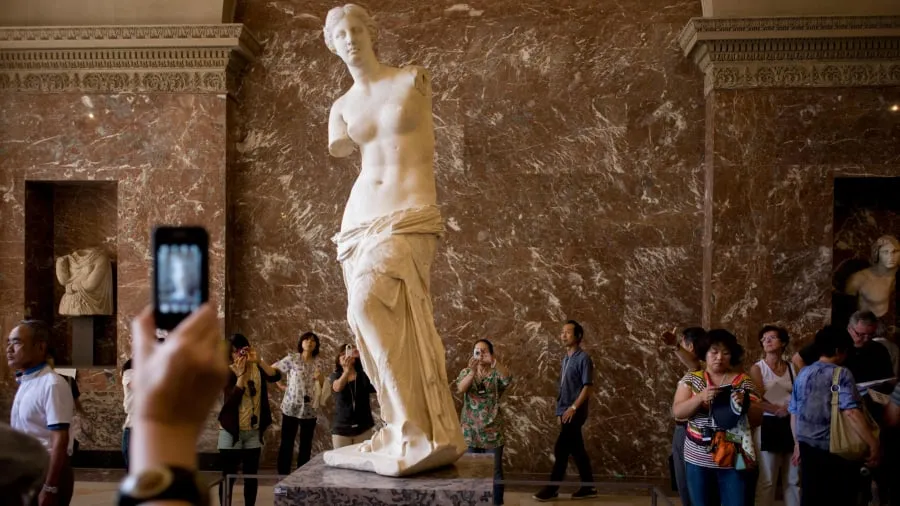
Although it has lost both arms, the statue still exudes charming, elegant, and vibrant beauty. “Venus de Milo” is a symbol of eternal beauty, transcending time and space.
The Coronation of Napoleon – A Historic Moment
“The Coronation of Napoleon” is a magnificent painting by Jacques-Louis David, depicting the coronation ceremony of Napoleon Bonaparte as Emperor at Notre-Dame Cathedral in Paris in 1804. The painting is of enormous size, with hundreds of characters painted meticulously and vividly.
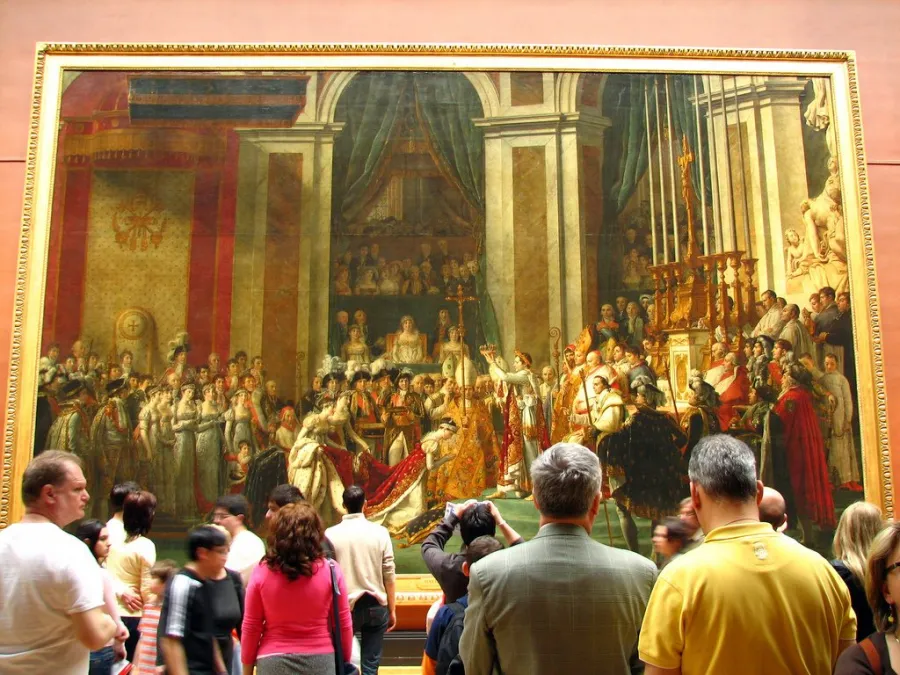
David used masterful painting techniques to recreate the solemn, dignified, and powerful atmosphere of the ceremony. “The Coronation of Napoleon” is not only a historical painting, but also a propaganda piece, expressing admiration and glorification of Napoleon Bonaparte.
Dying Slave – Aspiration for Freedom
“Dying Slave” is a marble statue by Michelangelo, depicting a slave trying to break free from shackles. The statue expresses the aspiration for freedom, the spirit of resistance, and the hidden strength of humanity.
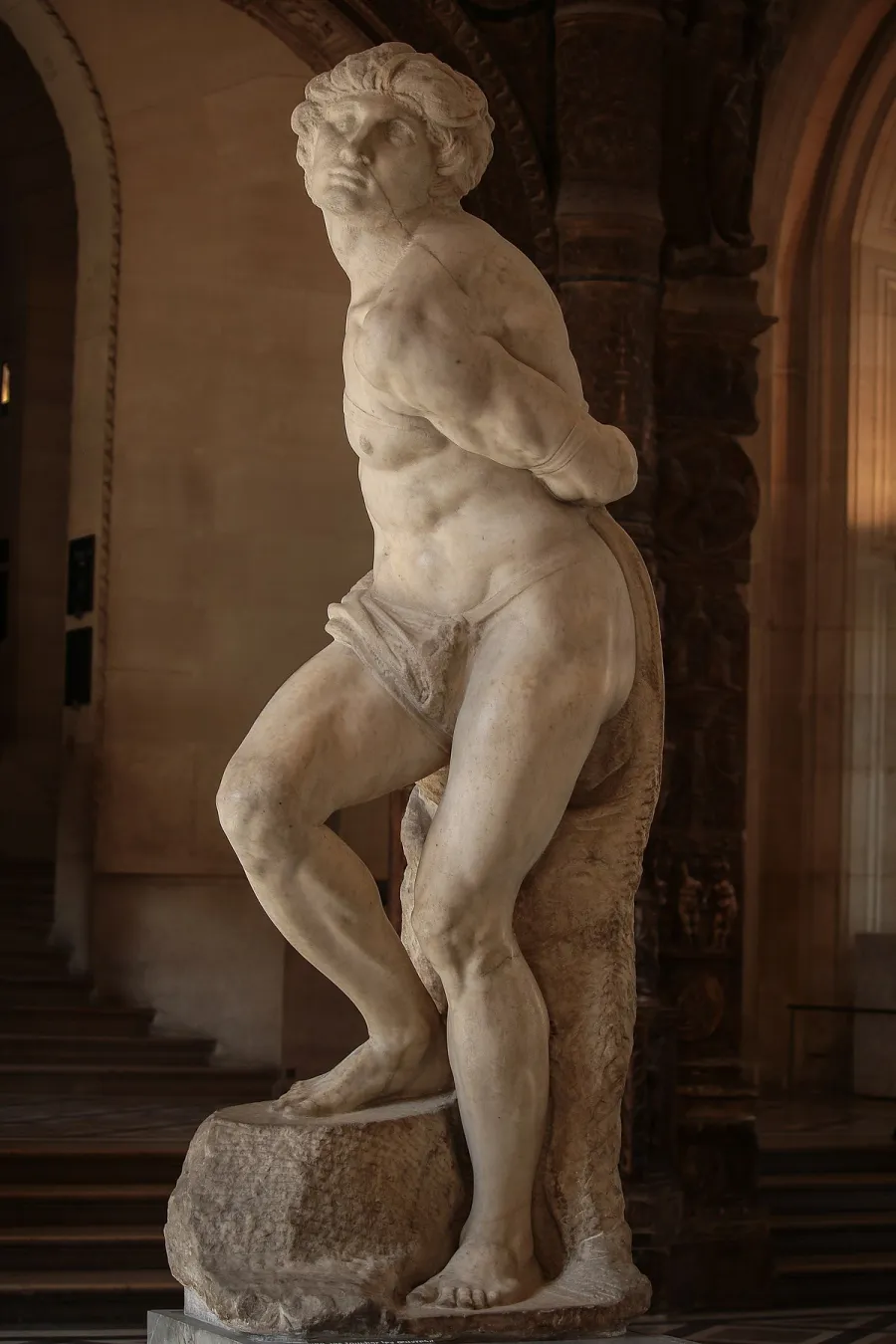
Michelangelo used skillful sculpting techniques to create strong, decisive lines, expressing the inner turmoil, suffering, and determination of the slave. “Dying Slave” is a symbol of the struggle for freedom and human dignity.
The Grande Odalisque – Oriental Beauty
“The Grande Odalisque” is an oil painting by Jean-Auguste-Dominique Ingres, depicting an Odalisque, or a concubine in a harem. The painting expresses the seductive, sensual, and mysterious beauty of the Orient.
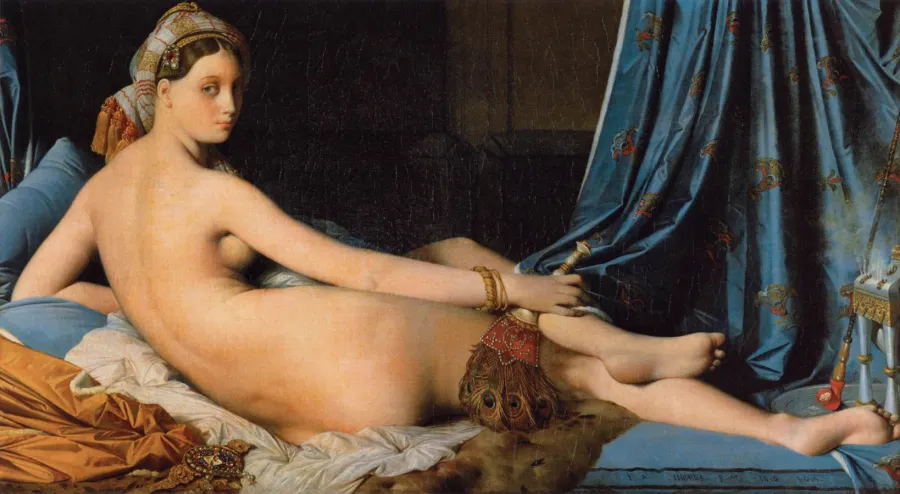
Ingres used bright colors, soft lines, and harmonious composition to create a painting full of aesthetics and artistry. “The Grande Odalisque” is a work expressing admiration and exploration of the beauty of different cultures.
An Old Man and His Grandson – Family Affection
“An Old Man and His Grandson” is a painting by Domenico Ghirlandaio, depicting an old man lovingly looking at his grandson. The painting expresses warm family affection, care, love, and tradition between generations.
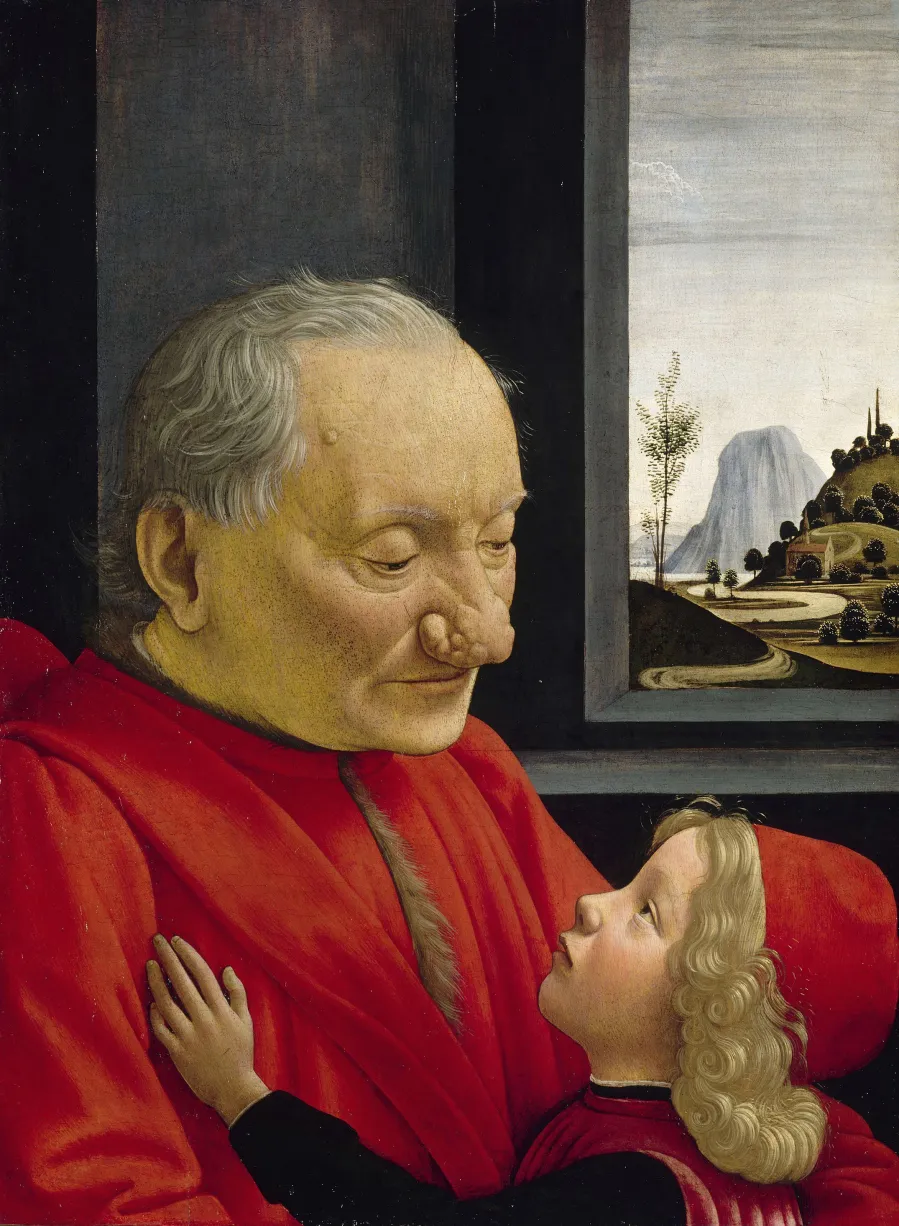
Ghirlandaio used delicate portrait painting techniques to express the genuine expressions on the faces of the two characters, creating a painting full of emotion and humanity. “An Old Man and His Grandson” is a praise of family affection, an important cultural value of humanity.
The Louvre Museum is not only a place to preserve priceless works of art, but also a unique cultural, historical, and architectural space. Exploring the most famous paintings at the Louvre is a fascinating journey, helping us better understand the history, culture, and art of humanity.